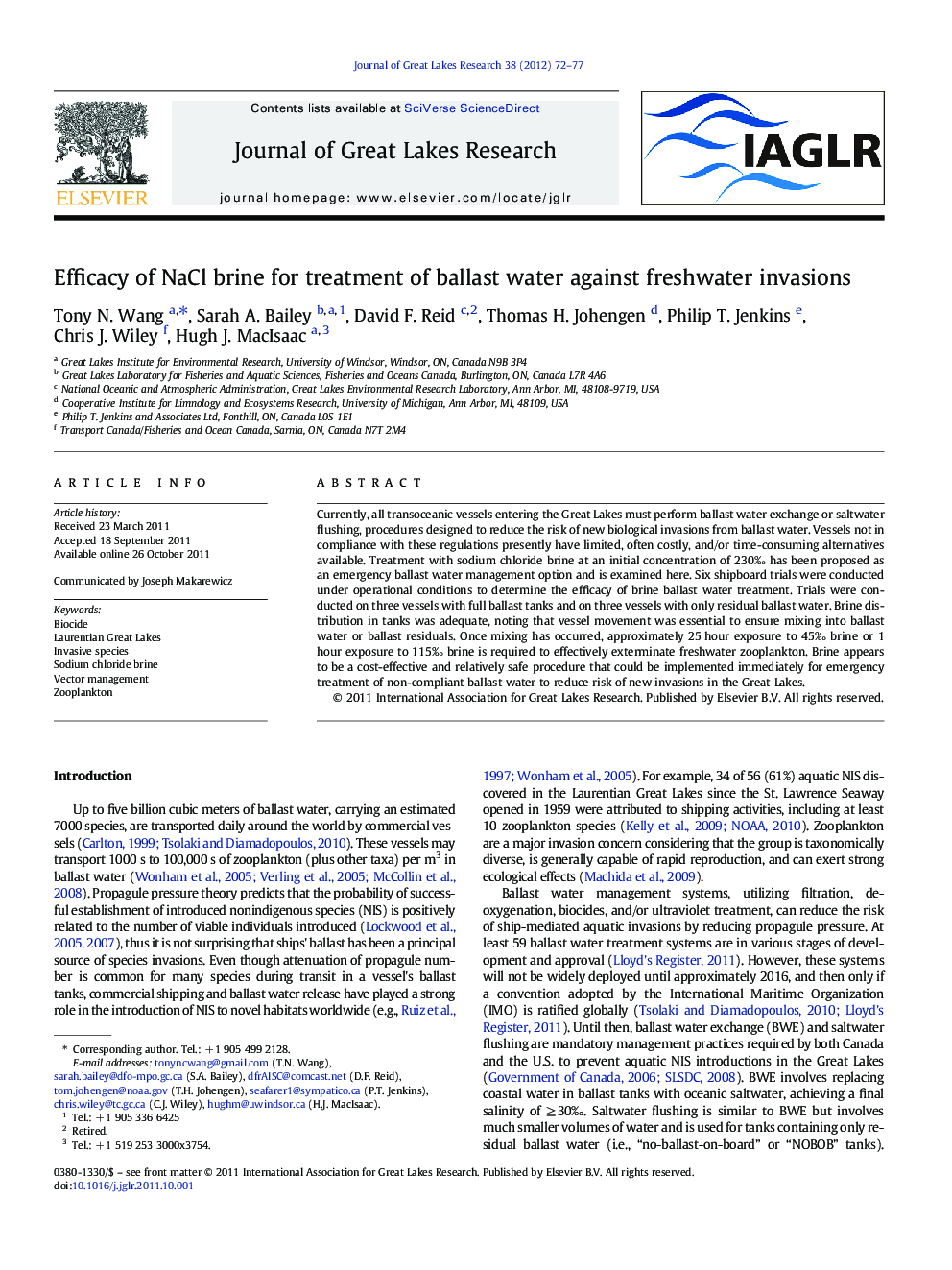| کد مقاله | کد نشریه | سال انتشار | مقاله انگلیسی | نسخه تمام متن |
|---|---|---|---|---|
| 4398598 | 1306697 | 2012 | 6 صفحه PDF | دانلود رایگان |

Currently, all transoceanic vessels entering the Great Lakes must perform ballast water exchange or saltwater flushing, procedures designed to reduce the risk of new biological invasions from ballast water. Vessels not in compliance with these regulations presently have limited, often costly, and/or time-consuming alternatives available. Treatment with sodium chloride brine at an initial concentration of 230‰ has been proposed as an emergency ballast water management option and is examined here. Six shipboard trials were conducted under operational conditions to determine the efficacy of brine ballast water treatment. Trials were conducted on three vessels with full ballast tanks and on three vessels with only residual ballast water. Brine distribution in tanks was adequate, noting that vessel movement was essential to ensure mixing into ballast water or ballast residuals. Once mixing has occurred, approximately 25 hour exposure to 45‰ brine or 1 hour exposure to 115‰ brine is required to effectively exterminate freshwater zooplankton. Brine appears to be a cost-effective and relatively safe procedure that could be implemented immediately for emergency treatment of non-compliant ballast water to reduce risk of new invasions in the Great Lakes.
► We test the toxic effect of brine on freshwater invertebrates in ballast water.
► We test the distribution of brine in the ballast tanks.
► Brine was effective in killing zooplankton in ballasted and non-ballasted tanks.
► Brine was uniformly distributed in ballast tanks.
► Vessel movement is an important factor in brine distribution.
Journal: Journal of Great Lakes Research - Volume 38, Issue 1, March 2012, Pages 72–77